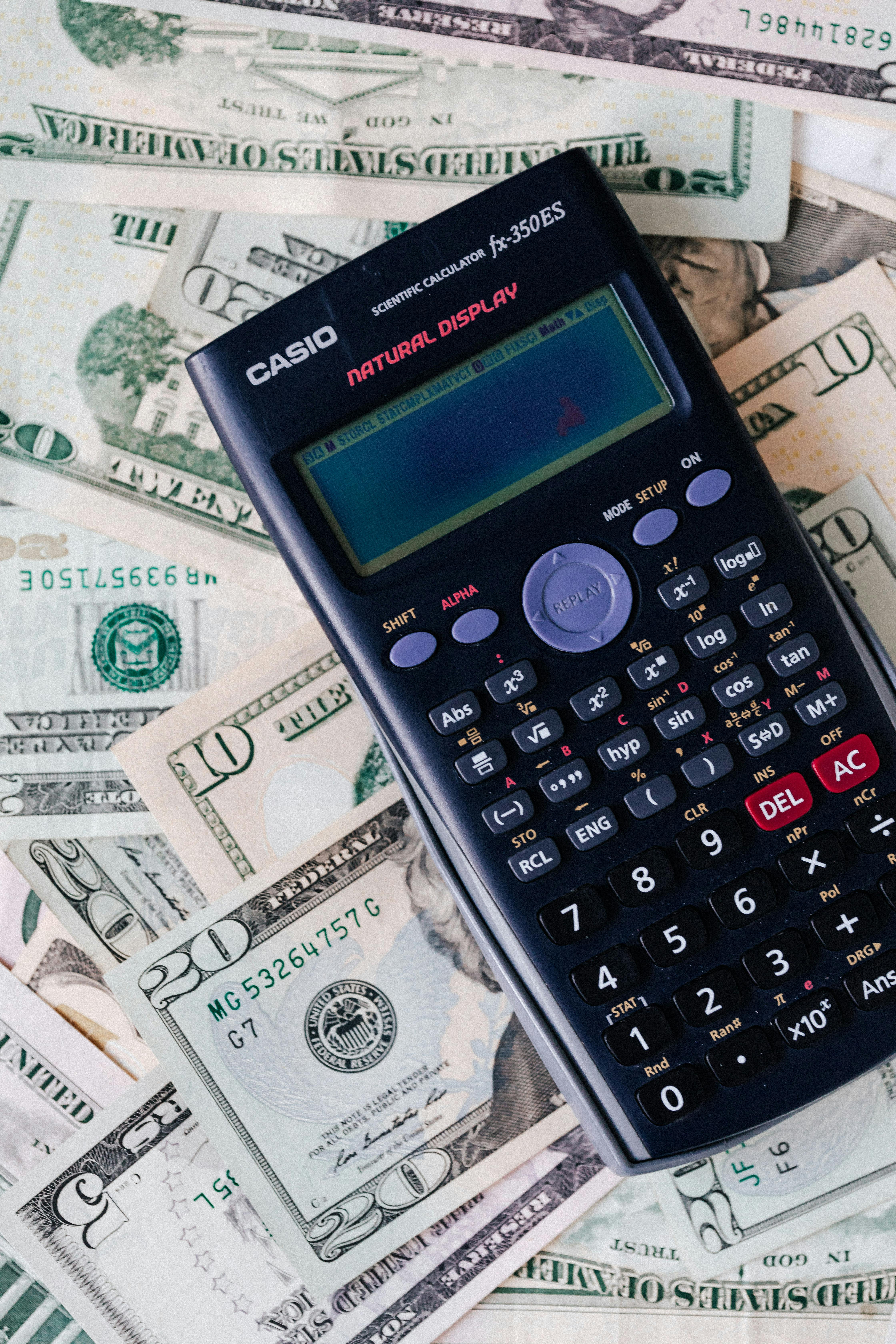Personal Finance Automation — Build a Self-Managing Budget Flow System (Without Traditional Budgeting)
Personal Finance Automation — Build a Self-Managing Budget Flow System (Without Traditional Budgeting)
Category: Finance
Most people don’t fail financially because of lack of income — they fail because their finances require constant manual decision-making. Every month feels like a fresh negotiation: “Should I save this? Should I pay that first? Can I move this to savings later?” This constant thinking loop creates decision fatigue, and decision fatigue always wins over discipline.
The opposite of financial stress is not “financial freedom.” The real opposite of financial stress is financial automation. A point where money flows into the right places before you even notice it — a system, not a habit.

Traditional budgeting teaches you to track every expense manually. But high-performance financial systems — the kind used by entrepreneurs and disciplined savers — don’t track manually; they route automatically. Money enters → gets distributed → remaining is guilt-free spending.
This method builds directly on top of what we established in our previous Finance article on Emergency Fund Placement Strategy: once your reserve is positioned correctly, the next step is to design how newly earned money travels through your financial accounts — without your intervention.
Budgeting vs Flow Architecture — A Mindshift Before Building the System
- 📉 Traditional Budgeting: “I will tell my money where to go manually every month.”
- 📈 Automated Flow System: “I will design a structure that moves money for me — and I just observe results.”
Imagine if every time money entered your account, it instantly triggered:
- ✔ A fixed % going straight into your protected Emergency HYSA
- ✔ Another % flowing into a Growth Reserve / High-Yield Pool
- ✔ Only the remaining amount arriving in your visible spending account
In that moment, you no longer “budget.” You observe your financial engine working.
👉 In the next section, we’ll outline the core blueprint: the 3-Channel Money Flow System — a model used in businesses but adapted for personal finance superiority.
The 3-Channel Money Flow Model — How Smart Finance Systems Route Income Automatically
In business banking and structured financial architecture, money never enters a single account and stays there. It passes through channels. This commercial logic is exactly what we adapt into personal finance to replace traditional budgeting.
💠 Channel 1 — The Collection Layer (Operational Intake)
- ✔ This is your **main income entry point** — your salary deposit account or business receiving account.
- ✔ It functions like the **Business Checking** structure explained in the Banking Series.
- ✔ Rule: **Money is not allowed to “live” here** — it only passes through.
💰 Channel 2 — The Reserve Allocation Layer (Emergency & Liquidity Security)
- ✔ A fixed % of every incoming deposit is routed immediately to your external **High-Yield Emergency Reserve**.
- ✔ This is directly tied to the Emergency Fund Architecture covered in our previous guide.
- ✔ Purpose: **Protection before lifestyle. Stability before flexibility.**
📈 Channel 3 — Growth or Lifestyle Distribution Layer
- ✔ After emergency allocation, remaining funds split into:
- 🎯 **Growth Pool:** Optional. Can be a secondary HYSA, Money Market Fund, or later micro-investment platform.
- 💳 **Lifestyle Account:** This is the only account you “see daily” — everything here is guilt-free spending.
Notice the hierarchy — the money doesn’t just “come in and stay.” It moves according to a script you design once, then let the system maintain. No more manual thinking, no more checking balances five times and deciding emotionally.

This mirrors what we built earlier in the **Banking / Account Separation Guide**, where structure creates clarity. Now we are linking structure with automation — so the clarity doesn't depend on your discipline.
👉 In the next section, we’ll build the **Automation Trigger Map** — showing exactly how to set triggers so your money auto-routes without manual transfers.
Automation Trigger Map — Turning Your Accounts Into a Self-Distributing System
Designing a money flow blueprint is step one. The next step is setting up automation triggers so your income follows the structure without requiring manual transfers or emotional decision-making every cycle.
⚙ Step 1 — Define the Main Trigger Point
- ✔ Trigger = **Moment income is received**
- ✔ Action = **Auto-transfer X% to Emergency Reserve (External HYSA)**
- ✔ Reason = Money must be routed **before** it appears in the visible spending account — otherwise your brain considers it “available.”
Most banks hide this feature under different names: Scheduled Transfer, Auto-Move, Auto-Sweep, Smart Allocation. It is the same mechanic that business banking platforms like **Mercury, Wise Business, Brex** use when routing revenue automatically into tax and reserve buckets.
💧 Step 2 — Fund Emergency Layer First (Non-Negotiable Flow Priority)
- ✔ Your Emergency Reserve account (as explained in Emergency Fund Placement Guide) becomes the first destination.
- ✔ Even if it's just 5% at the start — the automation is more important than the amount.
- ✔ Reason: The brain adapts to what remains visible. If reserve money is hidden before you see it, you never feel like you “lost” it.
📈 Step 3 — Set Secondary Trigger for Growth/Investment Reserve
- ✔ Once emergency goals reach baseline, add a **secondary auto-transfer rule** that diverts surplus income into a growth pool.
- ✔ This can be a second High-Yield Account or pre-investment cash buffer (to avoid pulling directly from emergency funds for opportunities).
💳 Step 4 — Whatever Remains = Lifestyle Account (Free Spend Zone)
- ✔ After emergency and growth allocations run automatically, **only the remaining amount** lands in your daily spending account.
- ✔ This creates a guilt-free lifestyle budget — you can spend confidently because the system has already taken care of protection and future.
The result? You don't budget — the architecture budgets for you. Just like how we separated business vs personal accounts in the Banking Series, now we're separating money **timing** — not just money **location**.
👉 Next, we will connect this to **real account setup examples** — including how to name accounts, where to place them (inside or outside main banking apps), and how to avoid psychological leakage.
Account Naming Strategy — Hiding Funds in Plain Sight Using Banking Psychology
Most people underestimate how much account naming affects spending behavior. Something as simple as naming an account “Savings” versus “Emergency Vault — Do Not Touch” changes how your brain responds when you see it inside your banking UI.
In our earlier Banking guide on Mobile Banking UI Behavioral Influence, we explained how seeing high available balances triggers unconscious spending impulses. The solution isn't “be more disciplined.” The solution is design your accounts so your brain sees only what it's allowed to spend.
🎭 Smart Naming Format for Financial Automation
- Collection Account: “🟢 Income Routing (Not a Spending Account)”
- Emergency Reserve Account (Hidden HYSA): “🔒 Emergency Vault — Protected Funds”
- Growth Reserve Pool: “📈 Future Capital Holding — Do Not Withdraw”
- Lifestyle Account: “💳 Spendable Balance — Free to Use”
These labels do two things:
- ✔ They mentally categorize money based on its role — not just its amount.
- ✔ They reduce emotional impulses by separating identity of funds — your brain stops grouping all balances under “my money.”
🔐 Visibility Control — The Hidden Key to Automation
- ✔ Hide “Emergency Vault” from the dashboard if your bank allows it.
- ✔ If hiding is not possible — place it in a separate external bank app with no push notifications.
- ✔ Turn off “balance preview” in widgets — force manual login to check (adds a friction layer to prevent impulse usage).
This mirrors the same idea behind storing your emergency fund in an external High-Yield Account (as covered in the article Where Smart Savers Store Emergency Funds). It’s not just about interest — it’s about psychological separation.
👉 In the next stage, we’ll build the final component of your automated finance system — **monthly review scripting**, where you don’t “manage money,” you just monitor reports generated by your own system.
Final Layer — Review Without Micro-Managing
Once your financial system is automated and accounts are clearly labeled, your role shifts from money manager to system observer. You don’t “do money tasks” — you simply monitor flows to ensure everything is running according to script.
📅 Monthly or Bi-Weekly System Check — Not a Budget Review
- ✔ You don’t track expenses — you check whether routing triggers executed properly.
- ✔ You don’t stress about “how much you saved” — your system already ensured allocation occurred.
- ✔ Your only role: Look at balances once a month and verify flow logic is still active.
This mirrors how businesses operate: CEOs don’t move money manually. They observe cash flow dashboards and adjust systems only when necessary. That’s exactly the DNA of a Personal Finance Automation System.
Where to Go Next — Expanding the System Into Growth Mode
Now that your Emergency Layer and Automated Flow Channels are fully structured, you are ready to expand into the next stage of the Finance Framework: Growth Allocation & Micro-Investment Routing — where surplus begins compounding instead of sitting idle.
📌 Next in the Finance Series:
🔁 Connected from Banking:
You no longer “budget” — your money flows. And soon, your system won’t just protect — it will grow.
